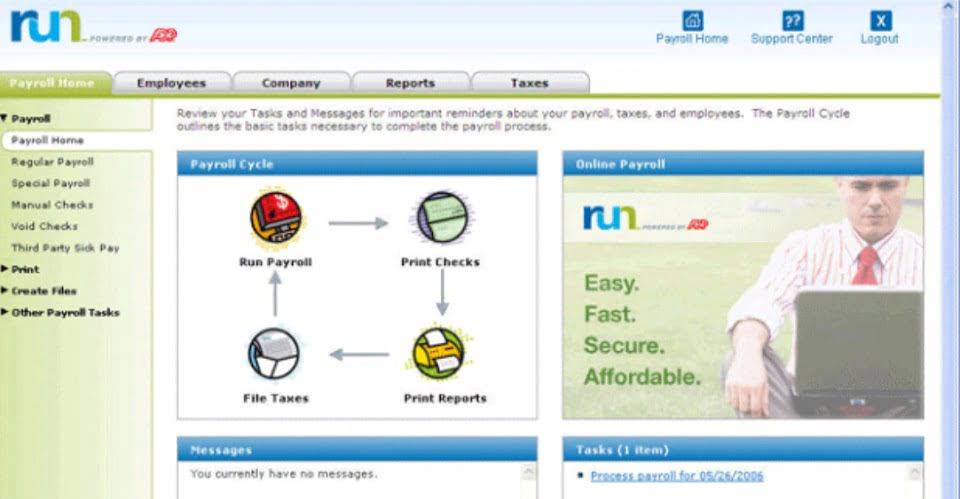Accounting Cycle 8 Steps in the Accounting Cycle, Diagram, Guide
The purpose of this step is to ensure that the total credit balance and total debit balance are equal. This stage can catch a lot of mistakes if those numbers do not match up. Generally accepted accounting principles (GAAP) require public companies to use accrual accounting for their financial statements, with rare exceptions.

What is Fund Flow Statement? Objectives, Advantages, Limitations

The record is placed on the credit side of the Service Revenue T-account underneath the January 17 record. Note that this example has only one debit account and one credit account, which is considered a simple entry. A compound entry is when there is more than one account listed under the debit and/or credit column of a journal entry (as seen in the following). After closing, the accounting cycle starts over again from the beginning with a new reporting period. Closing is usually a good time to file paperwork, plan for the next reporting period, and review a calendar of future events and tasks.

Closing Entries
As businesses grow more complex, the importance of meticulous posting cannot be overstated. It ensures that every transaction is recorded correctly, providing a reliable basis https://www.bookstime.com/ for financial analysis and decision-making. Once all journal entries have been posted to T-accounts, we can check to make sure the accounting equation remains balanced.
Do you own a business?

Financial accounting refers to the processes used to generate interim and annual financial statements. The results of all financial transactions that occur during an accounting period are summarized in the balance sheet, income statement, and cash flow statement. The financial statements of most companies are audited annually by an external CPA firm. Accounting is the process of recording financial transactions pertaining to a business. The accounting process includes summarizing, analyzing, and reporting these transactions to oversight agencies, regulators, and tax collection entities.
Steps of the Accounting Cycle
For example, recording a capital expenditure as an operating expense can distort financial statements and mislead stakeholders. To correct this, accountants must review the transaction details and reclassify the entry to the appropriate account, ensuring that the financial data accurately reflects the nature of the transaction. The key steps in the eight-step accounting cycle include recording journal entries, posting to the general ledger, calculating trial balances, making adjusting entries, and creating financial statements. As business transactions occur during the year, they are recorded by the bookkeeper with journal entries. After an entry is made, the debit and credit are added to a T-account in the categorized journal. At the end of a period, the T-account balances are transferred to the ledger where the data can be used to create accounting reports.
Accounting Cycle vs. Budget Cycle
- For instance, if revenue transactions are not posted promptly, the financial statements may not reflect the true financial position of the company, potentially misleading stakeholders and decision-makers.
- This is posted to the Unearned Revenue T-account on the credit side.
- He has been the CFO or controller of both small and medium sized companies and has run small businesses of his own.
- In short, although accounting is sometimes overlooked, it is absolutely critical for the smooth functioning of modern finance.
- The record is placed on the credit side of the Accounts Receivable T-account across from the January 10 record.
Thus, the balance at which they end at in the previous accounting period is the balance that is carried forward to the next accounting period on the first day. posting in accounting This entering of balance in the next accounting period is called opening entry. There are two parts in the ledger the debit part and the credit part.
Recall that the general ledger is a record of each account and its balance. Reviewing journal entries individually can be tedious and time consuming. The general ledger is helpful in that a company can easily extract account and balance information. The main purpose of the accounting cycle is to ensure the accuracy and conformity of financial statements.
- Understanding the operating cycle in your business is essential for cash flow management.
- It also helps to ensure consistency, accuracy, and efficient financial performance analysis.
- Many companies use accounting software or other technology to automate the accounting cycle.
- Following proper separation of duties helps the posting process work smoothly, according to University of Florida’s guidelines.
- They provide a structured way to organize financial data, ensuring that every transaction is accurately reflected in the company’s financial statements.
What are Post Journal Entries?
- Timely posting is paramount in maintaining the accuracy and reliability of financial records.
- Essentially, cost accounting considers all of the costs related to producing a product.
- The accounting cycle involves updating, changing and verifying financial transactions during the course of business operations.
- A summary showing the T-accounts for Printing Plus is presented in Figure 3.10.
- To learn more, check out CFI’s free Accounting Fundamentals Course.
